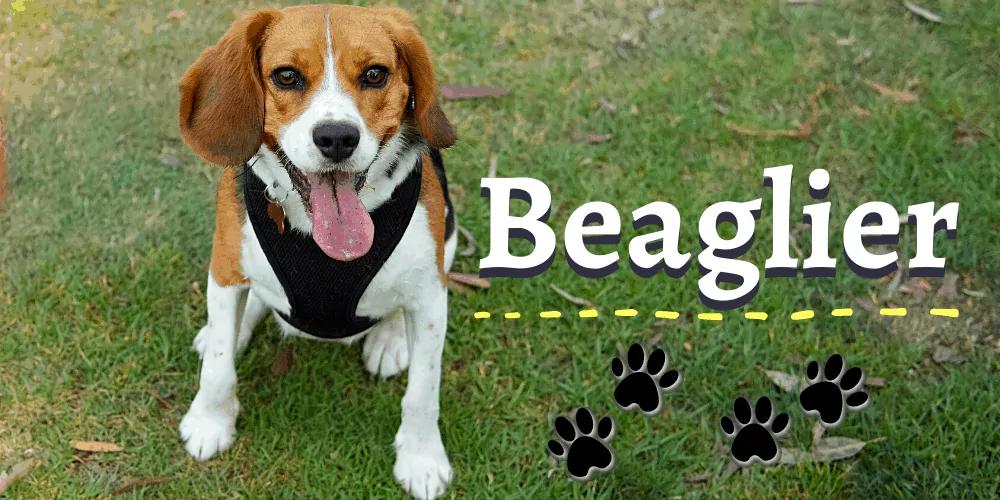The Beaglier is a small hybrid dog that has been, especially in Australia, since the 1990s.
This specific crossbreed dog is playful and energetic but is adaptable enough to enjoy the evening lounging as much as running through the local park.
It is a Beagle and Cavalier King Charles Spaniel cross and generally exhibits a pleasant mix of characteristics from its parents.
However, one of the main reasons for its development was to produce Beagle offspring that was not so enthusiastic in search of perfume on the trails.
Breed Overview:
- The Beaglier is a very friendly dog. After a short period of restraint, he reacts to small and large conspecifics and people with curiosity and friendliness.
- He has a clear sense of smell, which allows him to pick up even the most beautiful traces.
- The breed is also characterized by determination and perseverance. If the Beaglier has set something in its head, it tries to achieve its goal. His hunting instinct can get out of hand, and commands from humans are ignored.
- The Beaglier’s hearing is of the highest quality, and as pack dogs, the animals have a great ability to adapt – a condition that has a positive effect on living with the dog.
- For the Beaglier, there must be clear structures within its pack in which it has a permanent place. Otherwise, there is a risk that he will try to become the pack leader himself.
- His nature is brilliant, which does not necessarily go hand in hand with obedience. As a hunting dog, he is so shaped that he acts independently in the open field.
Temperament:
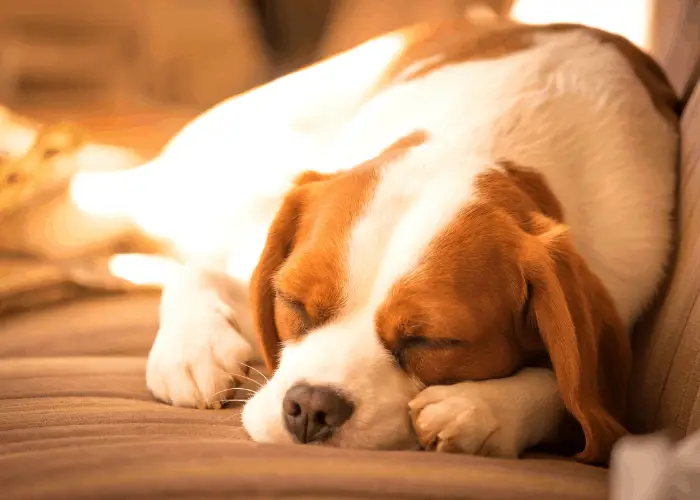
Beagliers are very vigilant dogs that bark loudly at unknown noises and report the danger to the pack.
However, they are not watchdogs as they are far too friendly for that. A burglar could easily bribe these dogs with a treat.
As some Beagliers may be more Beagle-like in behavior, it is vital that owners can provide a safe space from which the dog cannot escape in search of prey.
For the same reason, they are not suitable for homes with small pets, including cats. However, their life as a hunting pack means that they are generally very social with other dogs.
Beagliers are generally as gentle as the Cavalier while being slightly more hardy and therefore make good pets for children.
Beagliers are extremely affectionate companion dogs who always want to observe their owners. They are playful and energetic and thrive in homes with children, for whom they are ideal playmates.
For adults at home, the Beaglier is a lively and reasonably athletic walking or jogging companion. Still, it also knows how to chill out and isn’t always likely to bounce back in the evening when humans chill out after a busy day.
He is very social with other dogs, and generally with people, although rare individuals may show a hint of nervousness.
As discussed above, the Beagle’s strong hunting instincts mean that the Beaglier should not be left alone with small pets, and gardens and yards should be very well protected from escape attempts.
The Cavalier King Charles Spaniel is not a very energetic dog, but the Beagle is. The Beaglier will require regular daily walks and play.
This hybrid will thrive in a home with a large yard to explore. The Beagle in your hybrid cross may cause your Beaglier to want to be on the trail of a scent all the time, so make sure your garden is secure.
Do not leave it unattended, as it may decide to find its way hunting. A walk around the neighborhood to smell the scents and greet the neighbors is an excellent way to socialize your Beaglier and give him the outing he needs to be satisfied and fulfilled.
Although they are companion dogs and should be kept indoors with the family, they can be very abundant, which can be a problem for some owners.
Health and Well-being
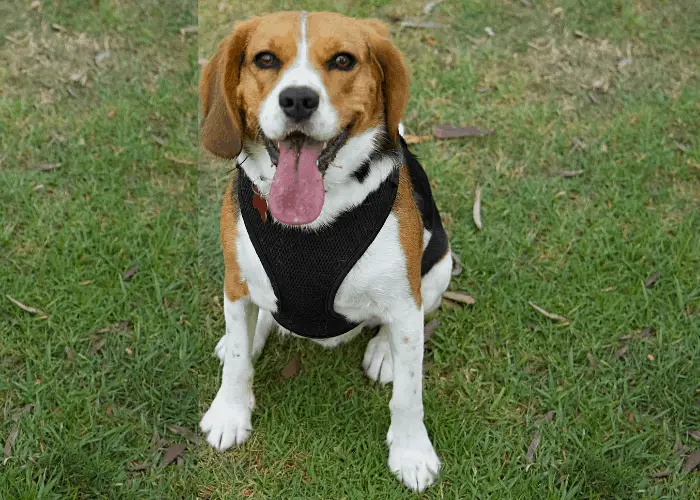
Those lucky enough to benefit from hybrid vigor may be healthier than their parentage. Still, all hybrids are at risk for inherited disorders such as those seen in purebred lines, and Beagliers can suffer from heart, eye, and orthopedic problems.
When buying a specific crossbreed puppy, always insist on proof of the parents’ good health in the form of a veterinary certificate and, where possible, spend time with at least one of the parents to make sure they are sociable and balanced.
Diet is undoubtedly crucial in raising a puppy, but nature certainly plays a significant role in a dog’s temperament, and certain traits, such as nervousness, can quickly be passed on. On average, a Beaglier has a life expectancy of 11 to 13 years.
History of the Beaglier

As all former Beagle owners will attest, the breed’s sense of smell and a strong urge for prey can make these sociable dogs a handful to control.
The Cavalier, on the other hand, has virtually no desire for prey. Since the two breeds are not different in size and shape, they seemed to go well naturally with early Australian breeders about twenty-five years ago.
For better or worse, crossbreeds generate an inheritance of characteristics from the parent, but Beagliers tend to have a relatively predictable appearance and temperament.
Neither pedigree involved has any severe behavioral defects, and Beaglier’s enduring popularity is a testament to his outgoing, sociable, and friendly nature.
Although this is a hybrid breed rather than a breed, many breeders practice multigenerational Beaglier to Beaglier breeding and are recognized by various specific crossbreed dog registries around the world.
A bit of the Beagle
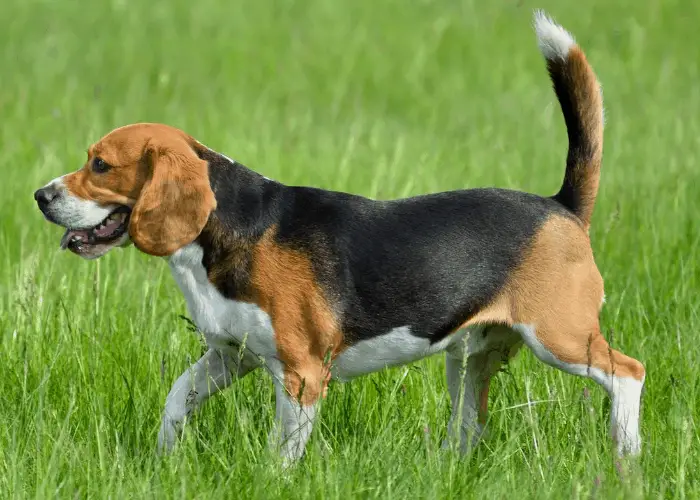
The Beagle breed is ancient.
Their ancestors can be traced to small rabbit hounds brought to England by the Romans and other illustrious hounds, such as the now-defunct Talbot Hound, brought from France by William the Conqueror.
Hunting dog with a strong sense of smell, Beagle-like dogs has been around since the 14th century. Oddly enough, the toy versions of the Beagle, the Pocket, and the Glove Beagle, were once prevalent during the Elizabethan era.
The Beagle’s popularity plunged in the 18th century when the larger and faster Foxhound was preferred as a hunting dog. It was popularized by the cartoon character Snoopy from the Peanuts comic strip in the 19th century. This irrepressible breed never really went away and flourishes as a favorite companion dog today.
A bit of the Cavalier King Charles Spaniel

The Cavalier King Charles Spaniel is a charming and adorable little companion dog. The breed’s large eyes and continuously wagging tail are sure to delight everyone, and they are patient and affectionate towards other pets and children.
Although its name evokes its origins at the court of Charles II, the Cavalier King Charles, or Cavie, is a recently developed breed, modeled after the toys of spaniels seen in many ancient paintings of European royalty.
Cavies are very adaptable and will learn to live happily in most environments. They are glued to living indoors, but are a small sport breed and require a moderate amount of exercise each day.
They should be in constant contact with their owners and not be left alone for long periods as they can be overwhelmed and depressed by regular isolation.
The Appearance of the Beaglier
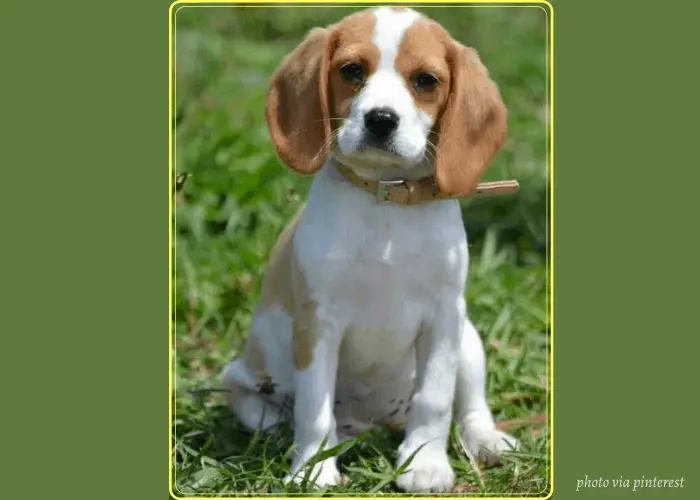
While multigenerational Beaglier crosses tend to resemble one or another of the parent breeds, first-generation Beagliers generally blend their characteristics reasonably evenly. They tend to have relatively large skulls and medium to large eyes.
The eyes, however, should not protrude as they do in the Cavalier. The muzzle is short, about a third of the head’s length, and the nostrils should be quite large.
This characteristic is mainly attributable to the Beagle, which means that the Beaglier should be free from any respiratory problems that one may observe in the Cavie. The ears are medium in size, with rounded edges, and hang down the head’s side.
Ideally, the limbs should be reasonably bony and straight. Seen from behind, a hind limb posture with an arched leg is undesirable, as it can indicate several orthopedic issues.
The neck and body are generally quite strong and compact, and the tail is held below the horizontal at rest, but with a pronounced upward curve. The coat is slightly longer than that of the Beagle and may have a slight wave, although it is often straight and a bit coarse.
The most common colors are tricolor (black, beige and white), tan and white, red and white, black and white, black and beige, ruby.
The average size of the Beaglier is 31 to 33 cm at the withers, and its weight range varies from 6 to 10 kg.
Raising the Beaglier Puppy
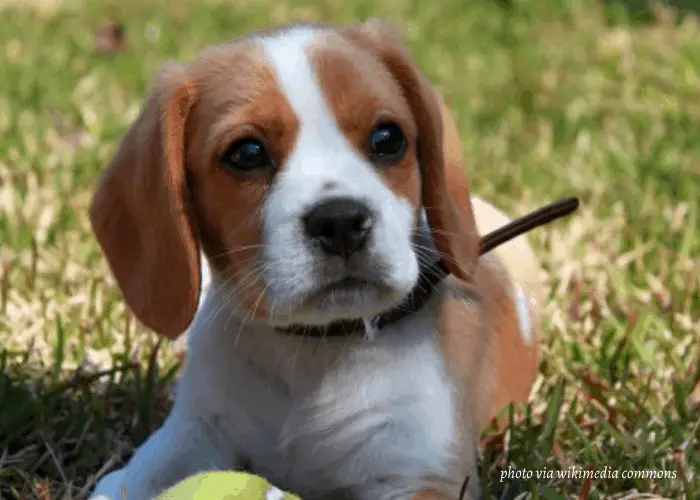
Beagliers are very smart dogs with a headstrong, stubborn character. They need a consistent upbringing to respect humans as pack leaders, carry out his orders, and not give in to the hunting instinct.
The most important thing about training with the Beaglier is retrieval training to ensure that the dog can later easily be let off the leash.
Since Beaglier generally does not like to be left alone, it is important to socialize and educate the puppy perfectly right from the start.
The small dogs are susceptible and need a gentle tone. Most can be achieved with loving and kind severity. Dog owners can easily take advantage of their greed for treats. For a tasty reward, representatives of this breed will do almost anything.
Tips for Raising the Beaglier puppy:
- Begin with the education immediately after the purchase or in the phase of getting to know the breeder.
- Show him where he’ll sleep as soon as you take him home.
- The Beaglier puppy learns its name by calling it. Make sure he responds and talks to him.
- The young dog needs a specific caregiver.
- Give him the right signal in response to his misconduct with a short “No!”, “Ugh!” Or “Off!”
- Only give the puppy a treat if it has behaved in an exemplary manner.
- Get your four-legged friend used to being alone from time to time.
- Be consistent.
Activities with the Beaglier

If the Beaglier is not used in its original use as a hunting dog, it should be given adequate exercise through alternative activities. Long daily walks and mental activity are critical to his or her wellbeing. To keep up with its drive, the adult Beaglier can ideally run next to the bike. He also likes to play with other dogs.
Suitable sports for the Beaglier
Been a cross Breed of the Beagle, the Beaglier needs plenty of exercise and exercise. The active four-legged friends are also ideal for various sports.
These sports are suitable for the Beaglier:
Dummy training: Dummy training was initially used in England to prepare for game hunting. In this way, the dog could quickly find the killed or injured animal and bring it back to the hunter.
Today, dummy training is used to challenge family dogs, such as Beaglier, in a species-appropriate manner. The training consists of marking, searching, and instructing.
Marking: First, the dummy is deliberately thrown as far as possible into confusing terrain. The dog should remember the dummy’s trajectory and only bring it back after a signal from the person.
This exercise demands the dog’s sensitivity because he must be able to estimate the approximate distance to the fall site.
Search: If the Beaglier cannot clearly identify the dummy’s target, it must systematically search the surrounding target area. Here his nose is challenged.
Instruct: If neither the marking nor the search has proven to be successful, instruction comes. With hand signals, a whistle, and a voice, the person must steer the four-legged friend in the right direction.
Dummy training offers many advantages:
- Additional exercise for the dog
- Increases the dog’s independence
- Promotes concentration and endurance
- Strengthens the relationship between dog and owner
- Offers variety
- Increases obedience to distractions
- Agility
This dog sport improves communication between humans and dogs and is particularly easy to practice outdoors.
In agility, the dog has to go through a course with obstacles, while the owner leads his four-legged friend through the course, as if on an invisible leash with body language and voice.
The course consists of various obstacles, such as B. slalom poles, seesaws, tunnels, hurdles, or tires.
The various obstacles are completed in a different order. Above all, it depends on speed, dexterity, and good handling with the dog. In agility, master and dog must harmonize, complement, and rely on each other.
The Beaglier particularly enjoys working closely with masters.
But be careful: This sport is not suitable for overweight and sick dogs due to the high level of exertion. It puts stress on the joints and can lead to joint diseases (e.g., osteoarthritis) in particularly heavy dogs.
Beaglier maintenance
If the Beaglier has a short coat, it will need to be brushed several times a week, and longer coats may require daily brushing to stay one step ahead of rugs and tangles. Swimming can be done monthly if necessary.
Their ears should be examined and possibly cleaned once a week. However, care must be taken not to allow moisture to accumulate in the ear, as yeast and bacteria can quickly form in this environment.
To prevent tartar, brush her teeth twice a week, as tartar buildup can cause periodontal disease. Making prep a part of your bonding time with your Beaglier will help him stay still and maybe even enjoy the attention as he matures.

